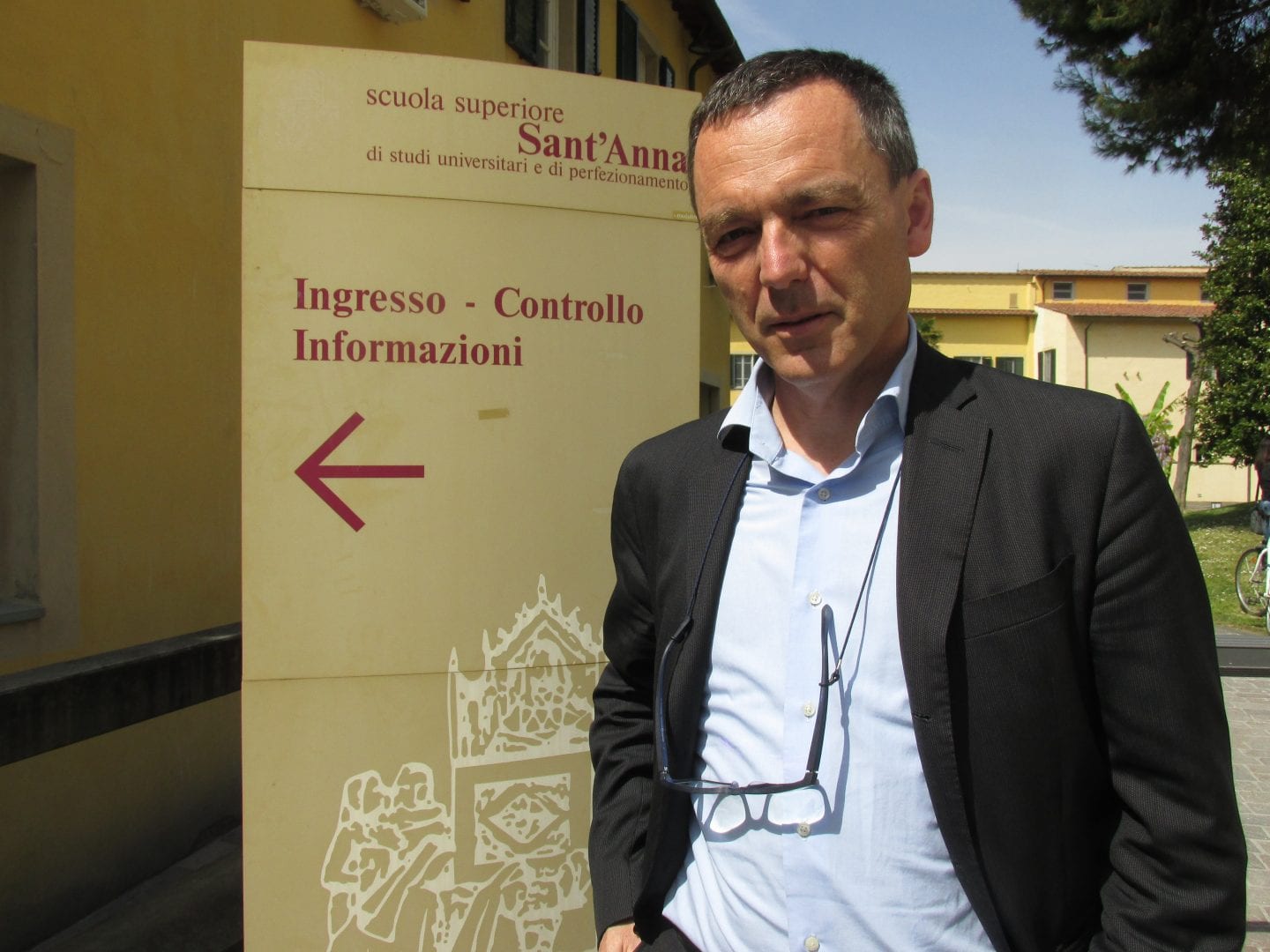
BLACK IS THE NEW RED AT PISA'S CUTTING EDGE UNIVERSITY
Luca Bardi, direttore generale, at Sant’ Anna
WHETHER it’s black tomatoes or robot octopuses, some of the most startling scientific developments are coming from Pisa.
The city’s exclusive Scuola Superiore Sant’ Anna science university is making a name for itself with a string of inventions that are being turned into money spinning commercial products.
It has created 41 spin-off companies, of which 35 are active, employing 180 people and earning 10 million euros in 2013.
The university is also responsible for 116 patents, the highest number of any Italian university. And the tiny but elite college is realising the importance of research and partnerships with industry and the private and public sectors.
With 116 proposalhaving been submitted it hauled in more than 14 million euros in research funds, from private and public resources, in 2013.
Among the eye-catching developments to come out of Sant’ Anna is the ‘sun black’ tomato – a tomato that realli is black on the ouside and red inside.
The development was’nt just for the show, of course, with the black pigment providing important health benefits.
Sant’ Anna is mining other scientific fields too, with important faculties in biorobotics, communication information and perception technologies, and life sciences.
It is engaged in cutting edge-work on creating robots to work undersea, such as its ground-breaking robotic ‘octopus’, something Plymouth’s marine sector may want to study.
It also has students studing economics,management, law, and politics, including conflict resolution. It is so exclusive only 50 from every 1,000 applicants make the grade, and then study for a five-year bachelor/master-type combined degree.
But its the science spin-offs that are viewed as the future says Luca Bardi, direttore generale of Sant’ Anna. “When the schoolwas founded in 1987 research was not very important, but we have developed it.”
“Sixty per cent of our budget is from the state, but the rest is from competitive self-financing – research and training programmes. We allow spin-off companies to be labelled with Sant’ Anna accreditation, but don’t participate in those companies.”
“We do however, allow our professors, doctors and researchers to be involved. Our policy is to allow spin-offcompanies to growby themselves, we give them the expertsto do that.”
He said the arm’s – length approach is partly to mitigate risk but also to ensure the university’s involvement decreases as the company grows.
Mr Bardi said that with just 110 faculty staff, the number of patents the university has developed represents an ‘outstanding result’.
“And the number of patents allows us to get extra funding,” he said.
“The black tomatoes came from our research. We are doing a lot with medical schools, developing small robots for surgery.”
He said Sant’ Anna also contributes to the economy with its spending. In 2014 it spent 40 million euros, splashing on such kit as lasers and 3D printers, though some goes outside the city and indeed Italy.
“But part of it stays here,” Mr Bardi said.
The Herald in Italy, William Telford, Business Editor of the Herald discovers some parallels between Pisa and Plymouth.
(Publicity generated by Dorcas Media)



